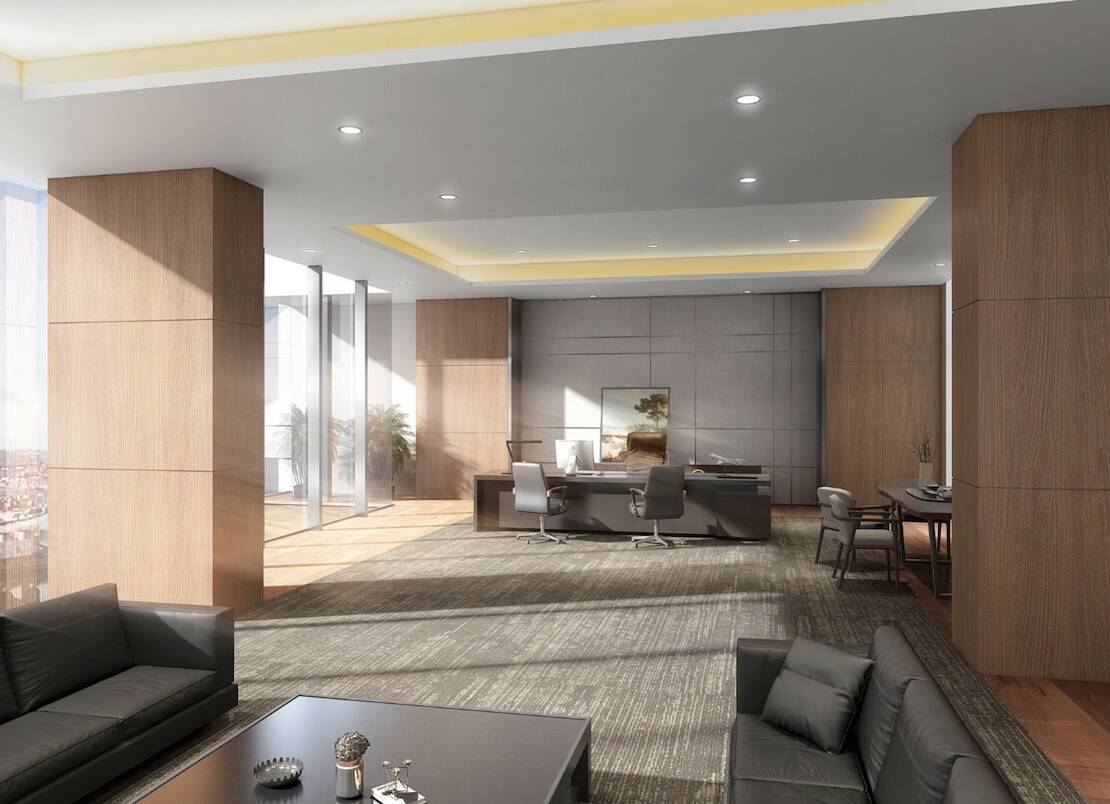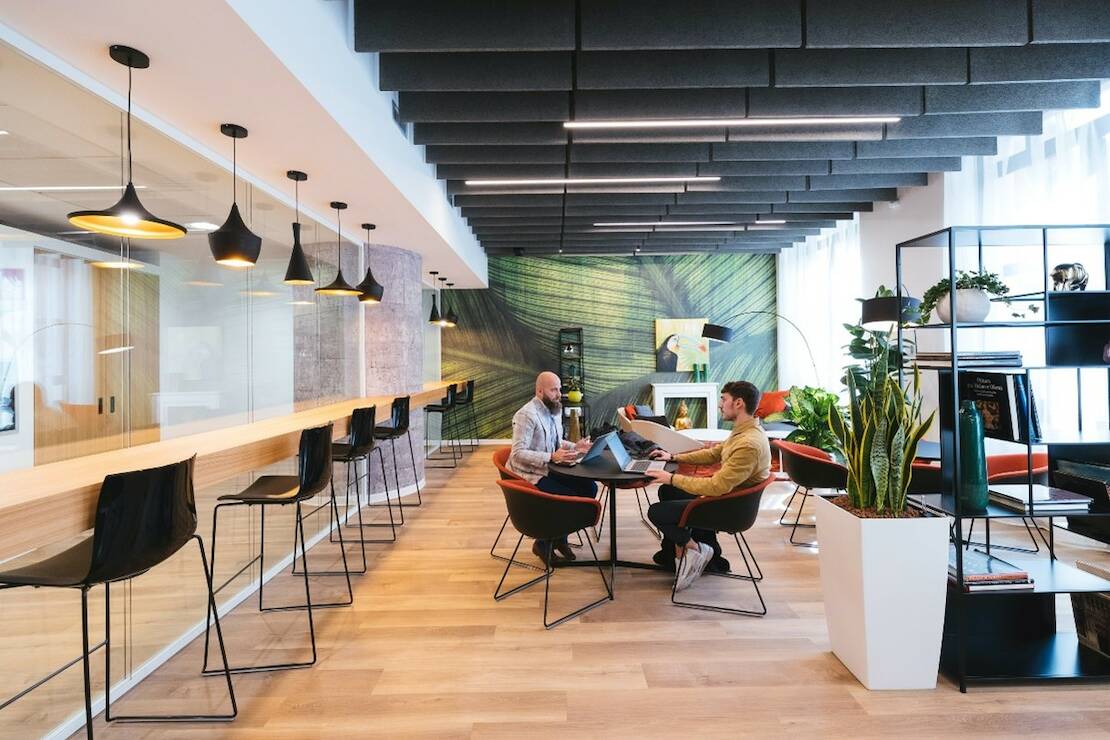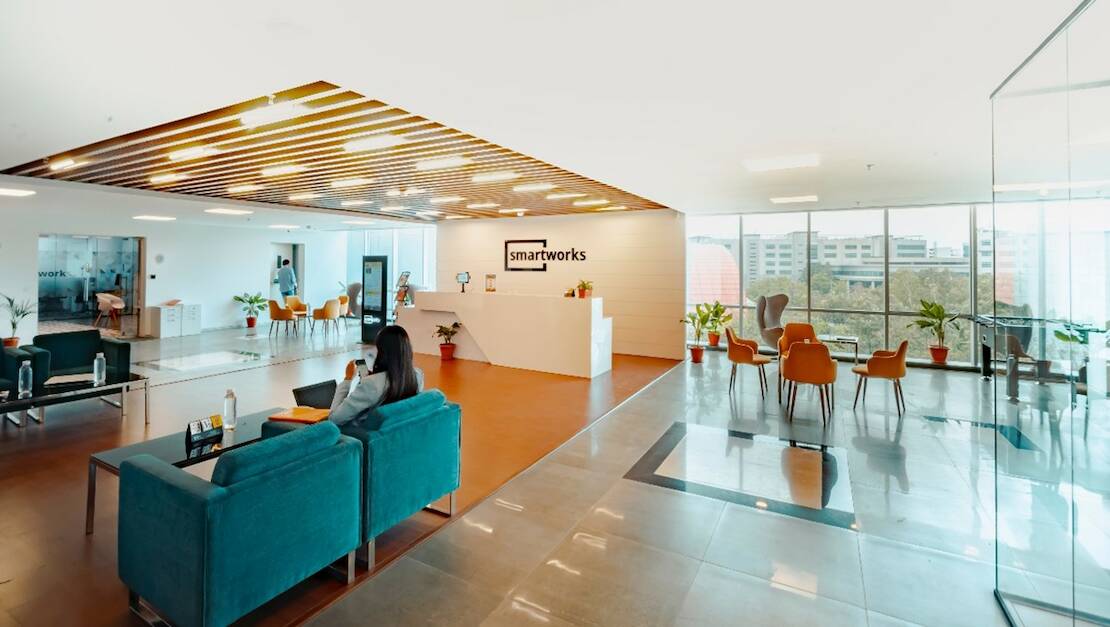- Home
- / Blog
- / Interior Design
Top 6 Tips to Productive Office Interior Design & Lighting
10/14/2021
Every business is different, and as such, the office interior design of each workplace varies. Well-designed office interiors reflect the brand. Whether creative, modern, minimalist, vintage, contemporary or corporate, the meticulous selection and combination of the interior design elements should mirror the vision of the brand.
The following are some of the key aspects to consider when designing your office interiors for maximum productivity:
1. Office Layout
The office layout is the first consideration in the design of the interior space. It is important to design a layout that incorporates spaces that encourage team collaborations as well as quiet spaces for private work to avoid distractions.

For maximum productivity, modern businesses also integrate social rooms such as break rooms for their employees to relax, recharge, and to take intermittent breaks from their screens.
Most companies have opted for a more open layout when it comes to employee working spaces. This, coupled with the modular, movable furniture, allows the employees to flexibly use the space as required.
The reception area is also a prime part of the office décor since it determines the first impressions of the clients in your office. The reception should be unique to the brand, comfortable, and welcoming. Add a few plants for a more personal touch.

Casual Meeting Room, Dan Gold, 2017, via Unsplash.
2. Color Scheme
Like any other form of décor, office design requires a set color scheme. Apart from the brand colors, the selection of the right colors is important to evoke the right psychological effect and therefore affecting how your clients and employees experience the spaces.
For a more welcoming tone, you can use subtle and pastel colors. Most corporate firms use white colors, which is often considered intimidating. Going for an off-white shade might therefore be preferable. Architectural Digest recommends adding a little color to a white space.
Blues and greens have a relaxing effect and are great for the office break rooms and lounges. Blue colors are also mentally stimulating and result in higher productivity, which is why they are also mostly used in private and corporate offices.

Brown Wooden Desk with Rolling Chair and Shelves near Window, Huseyn Kamaladdin, 2017, via Pexels
Colors with red undertones are energizing and are, therefore, great for conference rooms. Companies that thrive on creativity and innovation can use yellow colors in the color palette. For a more masculine office, you can use greys and browns for a neutral but powerful mood.
Overall, it is always safer to go with a pastel version of the preferred color for a more comforting and welcoming mood, or a richer version for a bold and energizing effect. While bright colors might be invigorating, it is advisable to use them for accenting in walls or accessories.
3. Furniture
Furniture is a big part of every office décor. From the seats to the work desks and the shelving, every piece must fit perfectly into the space. Open shelves are great for displaying the array of books and decorative pieces, while closed shelves and cabinets come in handy for the storage of paperwork and files.
Acquire striking furniture to elevate your office space. Accent chairs, a uniquely shaped waiting area couch, a magnificent mahogany desk, or sleek reception furniture might make all the difference in the room.
Getting plush, comfortable, and ergonomic furniture is key to the high productivity of your employees. Having to work long extra hours can be unbearable and even detrimental to the health of your employees. Comfortable seats and cozy couches in the break rooms are a small price to pay for the consequently high productivity.

4. Art
Art has become an integral part of every office décor. An outstanding art piece complements the mood of the room and creates a focal point to the office design. Add some artworks to the reception area, the break rooms, and even the private office spaces.
For the office, you can opt for a framed painting, wall art, abstract or typographical art that inspires creativity and motivates your team.

5. Finishes
Offices are high traffic areas. Therefore, durable finishes are more practical. There is a variety of options for floor and ceiling finishes. You can opt for wood laminates or textured carpets to break the monotony of tiled floors. For ceilings, false ceilings are the most commonly used for office spaces. They offer the flexibility of design, and when coupled with the right lights, can transform the space.

Office Space, Lixiao, 2020, via Pixabay
6. Lighting Design
The office lighting design is an essential aspect of office interior design. It is important to use adequate light with the right levels of brightness to keep the employees alert, while preventing glare and visual fatigue.
Natural Daylight
Natural daylight increases productivity and creativity at work. Therefore, it is crucial to maximize the use of daylight in your office space. It creates an airy feeling in the room that is highly conducive to efficient and comfortable working.

Artificial lighting
For artificial light, it is advisable to emulate the brilliant nature of natural daylight. Therefore, white bright light is preferred. You can incorporate artificial lighting into your space by layering ambient lighting, task lighting, and accent lighting.
Ambient Lighting
The recommended illumination level of standard office space is averagely 500 lux. However, you can layer the lights to avoid over-illumination of the entire workspace. With the varying levels of daylight, it is advisable to add artificial light with a light level adjustment.
Lighting control systems adjust the levels of artificial lights as per the natural daylight present. This will allow for the adjustment of the illumination throughout the day, for maximum visual comfort.
Task Lighting
Add additional pieces for task lighting, also with light level adjustment, as a welcomed break from the brightness of computer screens. Use pendant lights at the reception areas or breakrooms, and table lamps or floor lamps suitably for the private working desks.

Copernico Zuretti, Gianfranco Zuretti, 2020, via Unsplash
Accent Lighting
Incorporate wall light and picture light as accent lighting to highlight the art pieces. Office art and lighting are a necessity for every professionally designed office space.

Brown Wooden Cabinet, Vincent Rivaud, 2019, via Pexels
Additionally, backlight the company logo for an extra pop. Creatively use cove lighting for the false ceilings as a decorative feature for aesthetics, to build to the mood of the space. Fixing LED strip lights are a great way to attain this effect. Indirect lighting is an amazing way to achieve the required illumination while minimizing glare.
There are modern office lighting options for art lighting. You can also add custom direct mount lighting for the shelving and displays. Perfect Picture Lights specializes in quality modern lighting and classic lighting options with a diverse range of metallic and painted finishes for office art and lighting. The picture light and mount lighting designs are simply sleek and effortlessly fit into every office space décor.
The common areas such as the break rooms and lounges are great spaces for experimenting with a variety of office lighting fixture designs and lamp colors. You can also use a warm light source in the reception and waiting areas for a more welcoming and cozy feel.

Hyderabad, Smartworks Coworking, 2020, via Unsplash
Another key aspect of the lighting of offices is the energy-saving concept. Due to the fact that office lights are often left on for the most part of the day, LED lamps offer a better-energy saving option. Motion detectors are also essential for the automatic switching on and off of lights within the office space.
Focus on Bright Solutions
An office interior redesign and fit-out is a sure way to increase employee productivity, improve communication, maximize comfort, and boost the mood of the space. The office design determines the state of mind of not only the employees but also potential clients when they get into your office.
A good lighting solution also plays a crucial role in the productivity of your team. Therefore, get your employees excited and involved in the office décor to create a comfortable and accommodating working space for optimized output.
________________________________________________________________________________________________________________________________________
 Winny Okoth is a practicing Construction Project Manager and Interior Designer. She is also currently pursuing her Master’s Degree in Construction Project Management. Winny Okoth has a great passion for every form of design and has the mastery of principles of design, as well as 3D visualizations skills for architectural and interior design renders.
Winny Okoth is a practicing Construction Project Manager and Interior Designer. She is also currently pursuing her Master’s Degree in Construction Project Management. Winny Okoth has a great passion for every form of design and has the mastery of principles of design, as well as 3D visualizations skills for architectural and interior design renders.


